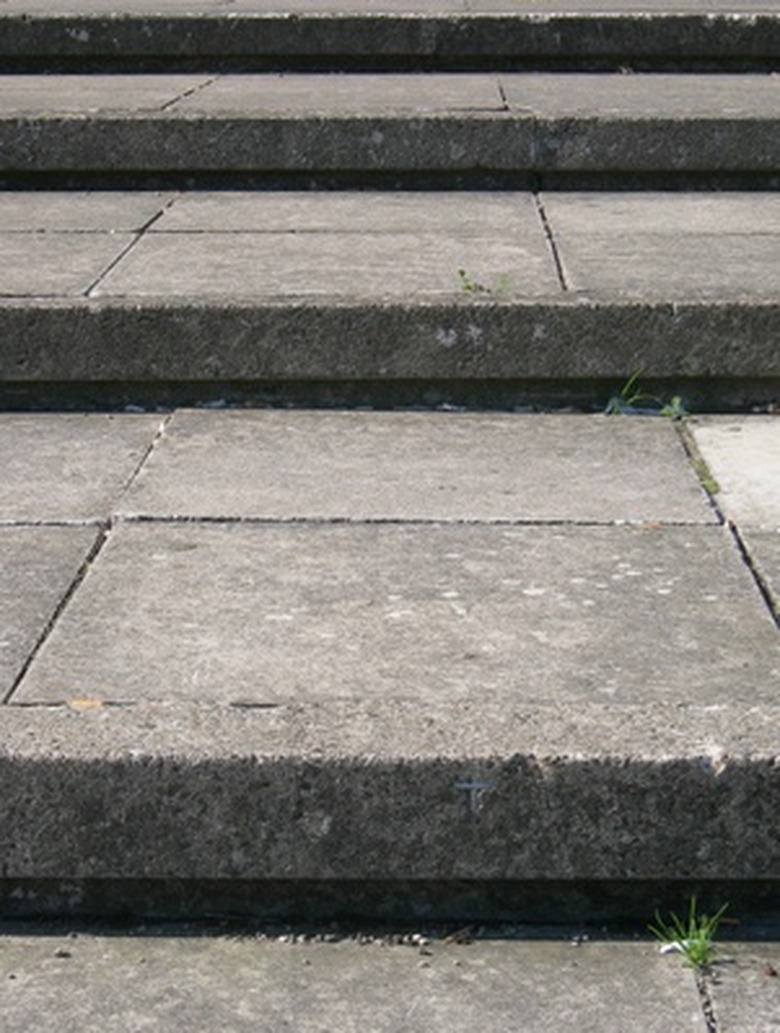How To Make Steps In A Garden Slope
Things Needed
- Spray paint
- Wooden stakes
- Mallet
- Level string
- Level stick
- Measuring tape
- Calculator
- Flagstone treads
- Limestone risers
- Shovel
- Carpenter's level
- Potting soil
- Creeping thyme
A sloping garden provides a number of challenges for the home gardener, including uneven footing for traversing from one end of the garden to the other. One way to overcome these challenges in a garden is to create a staircase that will provide you with sure footing as you ascend the slope of your garden. Natural materials such as flagstone are a good choice of material for making steps. Steps made of natural materials will blend with your landscape more effectively.
Step 1
Mark the pathway for your steps using a can of spray paint. Drive stakes into the top and bottom of the pathway.
Step 2
Tie a level string to the stake at the top of the pathway. Pull the string taut and hold it against a level stick at the point of the second stake. Measure the level distance between the two stakes, and the distance that the slope falls.
- A sloping garden provides a number of challenges for the home gardener, including uneven footing for traversing from one end of the garden to the other.
- Mark the pathway for your steps using a can of spray paint.
Step 3
Using the measurements for distance and fall, figure the size of each step based on the number of steps you would like to build. For example, if you want to build 8 steps over a space that spans 12 feet of ground and falls 8 feet in height, divide each measurement by 8. The steps will be 1 ½ feet deep and rise 1 foot each in height.
Step 4
Select flagstone steps for tread surfaces and stone foundation risers individually for purchase from a stone yard. Although you can purchase flagstone in pallets for less expense, the stones on the pallet are not of uniform thickness and size. Flagstone steps should all be the same thickness and width to create uniform steps and make your footing more secure.
Step 5
Dig a trench to set your first riser in place. Position the riser in the trench so that enough of it is exposed that the tread flagstones will be set at the correct height. For thicker flagstones, set the riser deeper into the trench. For thinner flagstones, the riser should be set shallower.
- Using the measurements for distance and fall, figure the size of each step based on the number of steps you would like to build.
- Position the riser in the trench so that enough of it is exposed that the tread flagstones will be set at the correct height.
Step 6
Dig a second trench above the first for the second riser. Repeat this process up the pathway of your stone until you have set all risers from the bottom to the top.
Step 7
Set your flagstones over the risers like puzzle pieces. Fill in the cracks between flagstones with soil.
Step 8
Plant a groundcover such as creeping thyme in the soil between flagstone cracks. This will give the steps a natural look and help hold the soil in place.
